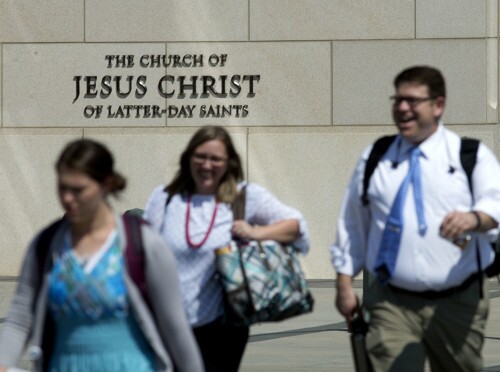The Church of Jesus Christ of Latter-day Saints. It’s a mouthful, there’s no doubt about it.
Yet it is, after all, eminently appropriate from a spiritual and descriptive perspective. Spiritually, it sublimely focuses on the Savior of the world. Descriptively, it powerfully reminds church members and tells others who we are.
On April 6, 1830, with Joseph Smith presiding, somewhere around 50-plus people gathered in and outside the Peter Whitmer Sr. log home in Fayette, New York. Under the Prophet’s direction they organized the Lord’s Church, restored to the earth. At the time it was known by various titles, primarily referred to as The Church of Christ from 1830 to 1834, as the Church of the Latter Day Saints in 1834, and The Church of Christ of Latter Day Saints from 1836 to 1838 (see “The Name of the Church,” by Susan Easton Black, in the Encyclopedia of Mormonism).
Whether leaders debated, or were even concerned, over the official name, I do not know. But the matter was officially put to rest by a revelation from the Savior on April 26, 1838, in Far West, Missouri, where many church members, in the face of persecution, had relocated.
When the Prophet Joseph Smith arrived early in 1838, it became headquarters of the Church and remained so until October. Wracked by internal dissension with the excommunication of several Church leaders, the community lacked housing for the impending influx of poor and needy members, and abounded in questions as to whether Far West would be permanent home for the Church.
The Lord with omniscient insight into what truly mattered — and what would truly afford His saints protection and defense from the storms ahead, informed church members of their duty to do missionary work, build a temple, gather others and create a tightly woven Zion community:
“Verily I say unto you all: Arise and shine forth, that thy light may be a standard for the nations; . . . gathering together upon the land of Zion, … for a defense, and . . . refuge from the storm, and from wrath when it shall be poured out . . . upon the whole earth. "Let the city, Far West, be a holy and consecrated land unto me; … build a house unto me, for the gathering together of my saints, that they may worship me" (see Doctrine and Covenants 115:5-8).
In this context — carrying out the great work ahead — the Savior mandated the official name by which His Church was to be known. Speaking “unto my faithful servants … and people of my Church … scattered abroad in all the world; … thus shall my church be called in the last days, even The Church of Jesus Christ of Latter-day Saints” (Doctrine and Covenants 115:3-4).
We find precedent and reason for the name — after His Atonement and the Resurrection — as Jesus ministered to the Nephites in the Americas. There, His disciples admitted there were “disputations among the people” over His Church’s name, and asked, “Lord, we will that thou wouldst tell us the name whereby we shall call this church.”
Patiently, the Lord asked if they had read the scriptures “which say ye must take upon you the name of Christ, which is my name? . . . Therefore ye shall call the church in my name; … If it be called in my name then it is my church, if it so be that they are built upon my gospel” (3 Nephi 27:3, 5, 8).
Most novels have short catchy titles, often indicating little about the book’s content. Not so academic articles and books. Titles tend to be long and lengthy, purposefully intending to inform readers about the subject matter of the article or book.
For example, my book "Extraordinary Courage: Women Empowered by the Gospel of Jesus Christ" describes that courage is needed to live the gospel of Jesus Christ, yet comes with the promise that those who so live will see God’s assistance, active and powerful in their lives, that they might accomplish more than they ever could in and of themselves.
The name of Christ’s Church today follows this descriptive pattern. It begins, “The Church of Jesus Christ” — Jesus Christ, the Redeemer of the world. Salvation only in and through Jesus Christ.
Consider, however, the additional descriptors in the name: “of Latter-day” — denoting that Christ’s gospel was taken from the earth and restored in these, the latter days, preparatory to His Second Coming.
“Saints.” Well, if I wrote the title, I might have ended with “Sinners” — because we all fall short and need the power of the Atonement in our lives, which clearly explains why I was not chosen to name the Church. Yes, we will all sin; however, the Savior of the world sees, and wants us to see, our possibilities and potential. He wants us to strive to be, and to become, Saints of the most high God. Thus, “The Church of Jesus Christ of Latter-day Saints.”
Isn’t it a perfect name for His Church — evocative, descriptive and focused on He whom we worship and through whom salvation comes. We should speak it and relish it proudly.
Lead image by Laura Seitz, Deseret News
Kristine Frederickson writes on topics that affect members of The Church of Jesus Christ of Latter-day Saints worldwide. She teaches part-time at BYU. Her views are her own. Email: kfrederickson.desnews@gmail.com

